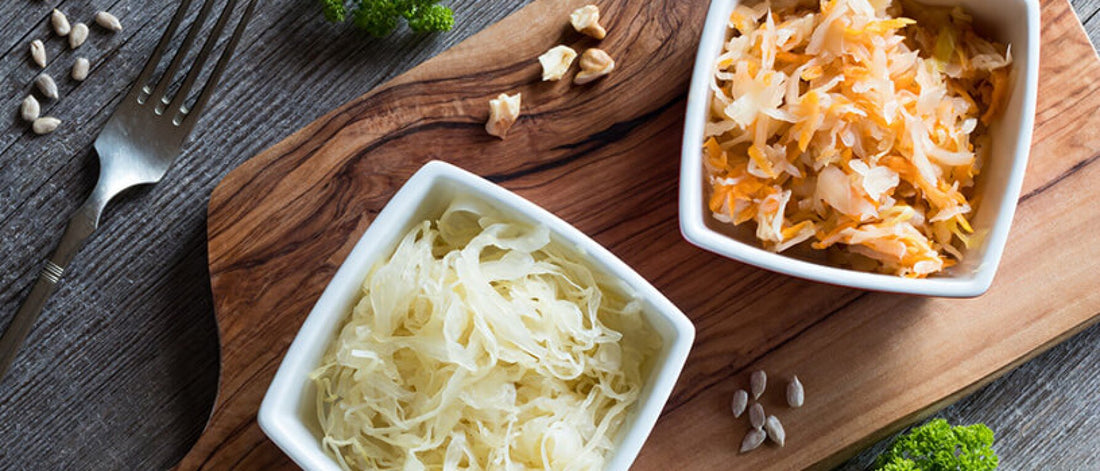Most of us were taught that to stay healthy, we need to avoid bacteria, viruses, and other microbes. This has led many people to take hygiene vigilance too far, with the constant use of hand sanitizers, household disinfectants, and other antibacterial products. While being clean is beneficial, the attempt to create a sterile environment can weaken our immune system and lead to an increased risk of illness.
The sanitizing substances that kill disease-causing germs also kill the friendly flora in our microbiome, which is the name for the vast colonies of micro-organisms that inhabit our body. The majority of them are found in our gut but they are also on our skin, in our mouth, and in most other locations on and in our body. These micro-organisms actually outnumber our own cells. These microbes aren’t all bad. In fact, we live in a symbiotic, caring relationship with most of them. They have been a vital part of our evolution and health for millions of years.
Beginning at birth, nature bathes us in microbes. Before we are born, our body has very few microbes and our gastrointestinal (GI) tract is completely sterile. Then as we move through the vaginal canal, we are coated in our mother’s microbiome from that area. Within hours of birth, the GI tract begins to be colonized by microbes. During the first few days of our life, our mother’s colostrum (breast milk) helps to feed and colonize our gut with good bacteria while preventing harmful bacteria from growing and causing illness. Scientists used to think colostrum was low in nutrients and therefore not very valuable. But we now know that colostrum delivers a mega-dose of microbiome-building elements. In short, breastfeeding is part of the process nature carefully designed to build our microbiome.
Gut microbiome richness and diversity are two important concepts to understand:
With high richness and diversity, a community is much more resilient and capable. This is easy to see because when you have lots of people with different specialties available to you, you’re able to call on just the right person for the job at hand. But what if you’re missing firefighters or only have five? Who is going to help when there’s a massive fire? By analogy, having a rich and diverse gut microbiome provides us with the resources our body needs to fight off pathogens and live in a state of homeostasis, or healthy dynamic balance.
The question naturally arises, How do we increase gut microbiome diversity and live healthier lives? In addition to stopping the overuse of disinfectants and sanitizers, we also need to be much more selective about our use of antibiotics. While antibiotics are a powerful ally in targeting pathogens and combatting infectious diseases, they also destroy the beneficial microbes that keep us healthy. Just one round of antibiotics can decrease gut microbiome diversity by at least 30 percent.7 Some researchers are finding that this drop in microbiome diversity may actually be much greater. Limiting your use of antibiotics is therefore an important step in creating a healthy gut microbiome that is both rich and diverse.
It’s important to keep in mind that because of its genetic complexity, a “normal” gut microbiome hasn’t been defined yet. Researchers generally believe, however, that a flourishing, healthy gut microbiome is established by eating a wide range of natural foods, with an emphasis on fruits, vegetables, and fiber. Here are a few guidelines for what to add to your diet and what to eliminate. If you follow these steps, you will simultaneously help to increase the diversity of your gut microbiome while decreasing inflammation in your bodymind.
Eat a variety of anti-inflammatory foods, including:
References
Get individualized insight into your gut microbiome with Viome. Viome’s technology and analysis have the ability to see deep into your gut microbiome. When you take your Viome test, you’ll receive targeted dietary and supplement advice that is designed to boost your gut microbiome diversity. When you get your Viome results, you’ll see your gut microbiome richness and diversity score, along with foods you should eat plenty of, foods you should minimize, and foods you should avoid altogether. Your personalized recommendations help you feed the beneficial microbes living in your gut, while starving the harmful ones—boosting your overall richness and diversity. To learn more about Viome and take control of your health, sign up here today.
The sanitizing substances that kill disease-causing germs also kill the friendly flora in our microbiome, which is the name for the vast colonies of micro-organisms that inhabit our body. The majority of them are found in our gut but they are also on our skin, in our mouth, and in most other locations on and in our body. These micro-organisms actually outnumber our own cells. These microbes aren’t all bad. In fact, we live in a symbiotic, caring relationship with most of them. They have been a vital part of our evolution and health for millions of years.
Beginning at birth, nature bathes us in microbes. Before we are born, our body has very few microbes and our gastrointestinal (GI) tract is completely sterile. Then as we move through the vaginal canal, we are coated in our mother’s microbiome from that area. Within hours of birth, the GI tract begins to be colonized by microbes. During the first few days of our life, our mother’s colostrum (breast milk) helps to feed and colonize our gut with good bacteria while preventing harmful bacteria from growing and causing illness. Scientists used to think colostrum was low in nutrients and therefore not very valuable. But we now know that colostrum delivers a mega-dose of microbiome-building elements. In short, breastfeeding is part of the process nature carefully designed to build our microbiome.
Your Gut Microbiome and Your Immune System
Approximately 70–80 percent of your immune system resides in the lining of your gut, and your microbiome is in constant contact with it. A healthy, resilient gut microbiome is high in richness and biodiversity. When there is high richness and diversity of the microbes in your gut, your immune system is stronger and more stable.1Gut microbiome richness and diversity are two important concepts to understand:
- Richness is the total number of bacterial species in your gut microbiome.
- Diversity is the number of individual bacteria from each of the bacterial species present in your gut microbiome.
With high richness and diversity, a community is much more resilient and capable. This is easy to see because when you have lots of people with different specialties available to you, you’re able to call on just the right person for the job at hand. But what if you’re missing firefighters or only have five? Who is going to help when there’s a massive fire? By analogy, having a rich and diverse gut microbiome provides us with the resources our body needs to fight off pathogens and live in a state of homeostasis, or healthy dynamic balance.
Decreased Diversity Is Associated with Disease
Having low diversity in the gut microbiome is a problem because it’s associated with a number of chronic illnesses, including:- Obesity 2
- Insulin resistance 2
- High cholesterol 2
- Inflammation 2
- Type 1 diabetes 3
- Type 2 diabetes 4
- Colorectal cancer 4
- Crohn’s disease 4
- Ulcerative colitis 4
- Celiac disease 4
- Allergies 4
- Chronic fatigue syndrome 5
- Polycystic ovary syndrome (PCOS) 6
The question naturally arises, How do we increase gut microbiome diversity and live healthier lives? In addition to stopping the overuse of disinfectants and sanitizers, we also need to be much more selective about our use of antibiotics. While antibiotics are a powerful ally in targeting pathogens and combatting infectious diseases, they also destroy the beneficial microbes that keep us healthy. Just one round of antibiotics can decrease gut microbiome diversity by at least 30 percent.7 Some researchers are finding that this drop in microbiome diversity may actually be much greater. Limiting your use of antibiotics is therefore an important step in creating a healthy gut microbiome that is both rich and diverse.
Eating for a Healthy Microbiome
In your daily life, the choices you make about what you eat can make the greatest difference in cultivating a healthy gut microbiome. The modern Western diet, which is low in fiber and high in sugar, salt, fat, and highly processed food, can also severely degrade the gut microbiome. When the gut microbiome is damaged or degraded, the intestinal wall can also be damaged. Then certain chemicals made by the bacteria, such as lipopolysaccharides (LPS)—also known as endotoxin—can leak through the intestinal wall into the bloodstream. Endotoxin is a potent trigger for our immune system and results in inflammation. As long as endotoxin is present, the inflammatory response will stay activated. This chronic inflammation is an underlying cause of many illnesses.It’s important to keep in mind that because of its genetic complexity, a “normal” gut microbiome hasn’t been defined yet. Researchers generally believe, however, that a flourishing, healthy gut microbiome is established by eating a wide range of natural foods, with an emphasis on fruits, vegetables, and fiber. Here are a few guidelines for what to add to your diet and what to eliminate. If you follow these steps, you will simultaneously help to increase the diversity of your gut microbiome while decreasing inflammation in your bodymind.
Eat a variety of anti-inflammatory foods, including:
- Fatty cold-water fish (such as salmon, tuna, mackerel, herring)
- Tree nuts (such as walnuts, almonds, etc., but excluding peanuts, a groundnut)
- Seeds
- Fresh fruit, especially berries and tart cherries
- Cruciferous vegetables (cabbage, broccoli, bok choy, cauliflower)
- Dark, leafy greens
- Soy (including soy milk and tofu)
- Tempeh
- Whole grains
- Organic dairy products
- Peppers (i.e. bell peppers, various chilies)
- Mycoprotein (from mushrooms and other fungi)
- Beets
- Ginger and turmeric
- Garlic
- Olive oil
- Ghee
- Active yogurt
- Kefir
- Pickles
- Sauerkraut
- Kimchi
- Eliminate or greatly reduce your consumption of foods that contribute to inflammation in the digestive tract as well as other health issues, including:
- Red meat
- Saturated and trans fats (animal fats and the hydrogenated vegetable fats contained in many processed foods)
- White bread and other processed foods made with refined flour
- White rice
- Refined sugar, high fructose corn syrup, and artificial sweeteners
- Sugary sodas
- Alcohol
- Processed, refined, or manufactured foods containing artificial flavorings, colorings, and sweeteners
- Foods containing antibiotics or hormones
References
- https://www.ncbi.nlm.nih.gov/pmc/articles/PMC3577372/
- https://www.nature.com/articles/nature12506
- https://www.ncbi.nlm.nih.gov/pmc/articles/PMC4689191/
- https://www.ncbi.nlm.nih.gov/pmc/articles/PMC4815357/
- https://microbiomejournal.biomedcentral.com/articles/10.1186/s40168-016-0171-4
- https://www.ncbi.nlm.nih.gov/pubmed/28045919
- https://www.ncbi.nlm.nih.gov/pmc/articles/PMC4709861/
Get individualized insight into your gut microbiome with Viome. Viome’s technology and analysis have the ability to see deep into your gut microbiome. When you take your Viome test, you’ll receive targeted dietary and supplement advice that is designed to boost your gut microbiome diversity. When you get your Viome results, you’ll see your gut microbiome richness and diversity score, along with foods you should eat plenty of, foods you should minimize, and foods you should avoid altogether. Your personalized recommendations help you feed the beneficial microbes living in your gut, while starving the harmful ones—boosting your overall richness and diversity. To learn more about Viome and take control of your health, sign up here today.






















